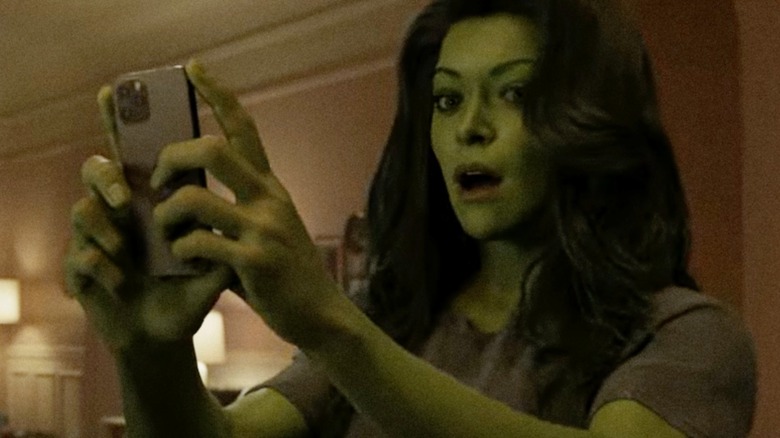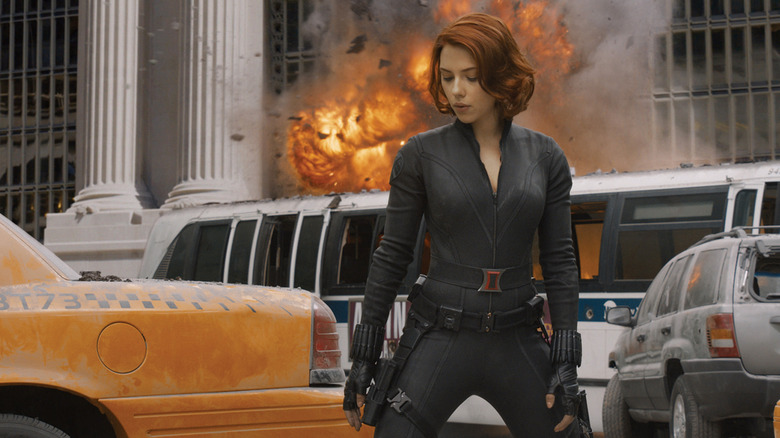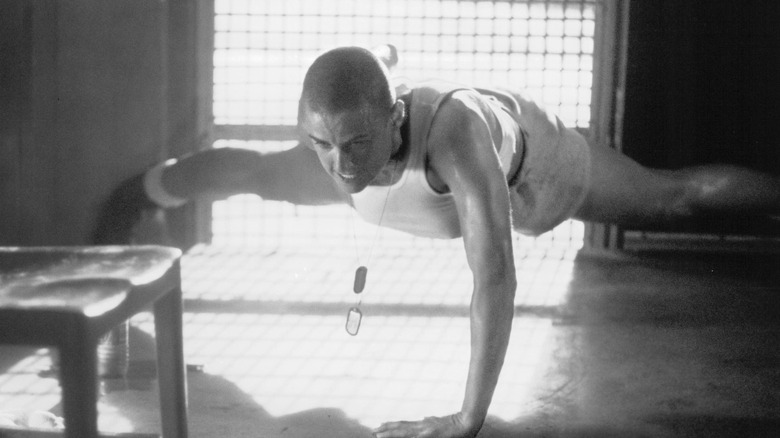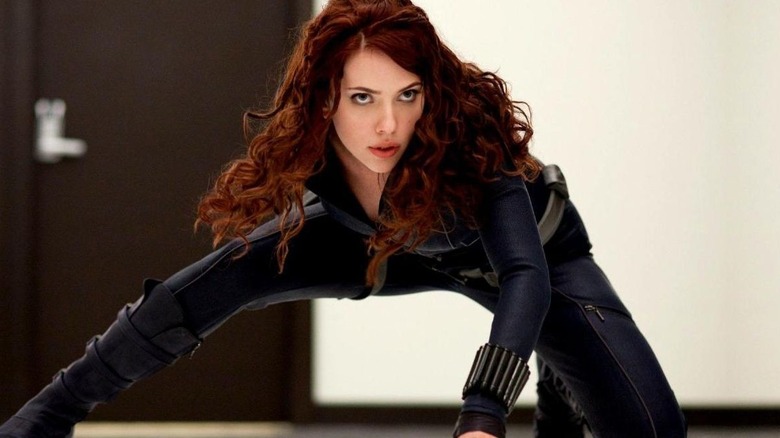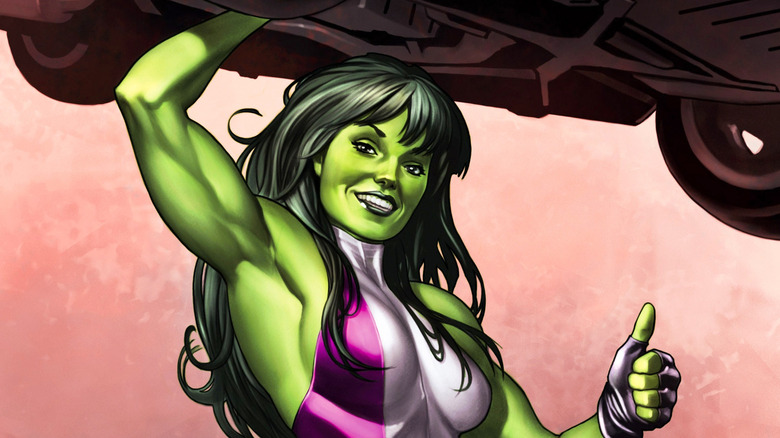Let Superheroines Be Muscular, Dammit!
The first trailer for "She-Hulk: Attorney at Law," the latest Marvel and Disney+ series, introduces audiences to Jennifer Walters, the hot-shot lawyer and cousin to Bruce Banner who becomes another green-hued muscled superhero. Tatiana Maslany of "Orphan Black" fame is in the leading role, CGI-d to a taller height with some added arm and calf definition for good measure. The effects were criticized but there's still time for the showrunners to add finishing touches to She-Hulk's look, which is one of the most interesting in the Marvel-verse (imagine if one of the women in "Law and Order" was close to seven foot tall and the color of grass but still wore a power suit with a pencil skirt).
While fans are hoping to see Jennifer fully She-Hulk smash things up, rumors emerged that Marvel Studios wanted Maslany to be less muscular for the role. One wonders what they thought a character named She-Hulk would look like. She's still a sliver the size of Bruce yet the idea of her being a woman with big muscles seemed to be a big no-no. That's not exactly a surprise, given pop culture's smothering body standards for women, but it does highlight a massive gap in our entertainment consciousness: where are all the hot muscly women?!
Hollywood and women's bodies
The film industry has never been a place for body positivity. The screens big and small have been the most widely consumed platforms for the consumption of our very existences, and for the establishment of what is and isn't considered beautiful. In the 1920s, thanks to the likes of movie stars Clara Bow and Louise Brooks, the thin flapper look became the most coveted body type for women worldwide. The '50s sex symbol image of Marilyn Monroe butted heads with the gamine likes of Audrey Hepburn. We've seen everything from heroin chic to the Brazilian butt lift epidemic go in and out of fashion. Yet, this sense of variety is false — one that has never been welcoming to women who aren't cisgender, skinny, or white. For all the talk of progress and the growth of body positive movements, it's still dishearteningly rare to see a woman in the spotlight who could in any way be described as truly unconventional.
Strong female characters
This extends to that muscled sculpted look, which hasn't exactly been absent from film and television but is certainly a rarity, even in 2022. When actresses did bulk up in this style, they were frequently lambasted in the press for not being feminine enough or daring to look less than sexy to their assumed male fanbases. When Linda Hamilton turned up in "Terminator 2: Judgment Day" with the physique of a kickboxer, many viewers were aghast at the transformation, as though it was a betrayal to see a future soldier training to actually fight. In 1997, Demi Moore played a trainee Navy SEAL in "G.I. Jane", a role for which she put on several pounds of muscle and did her own stunts, but was derided for going "ugly." Madonna was plagued with ageist and sexist insults after she got buff in her 40s, with tabloids comparing her to Gollum and accusing her of abusing steroids.
Hollywood's immense fatphobia has placed a stranglehold on the types of bodies that are considered worthy of the limelight but also the notion of heroism. There's a reason you don't see fat actresses getting many romantic leading roles, even though — surprise — plus size people exist and fall in love all the time. The disdain for the more muscled form feels like an offshoot of this hatred of fat bodies. The idea of being "large" in any capacity is written off as unattractive, even if having such a body makes sense for the character.
Superheroines are still skinny
As the blockbuster superhero movie took over Hollywood, we started to see incremental progress in terms of women leading major studio tentpoles (although we are, of course, still greatly outnumbered by our male counterparts.) This phenomenon had one of the most major effects on Hollywood body standards for the 21st century. Every man in these movies seems to use the same personal trainer, leaving them with identical torsos, truck-wide shoulders, and a habit of skipping leg day. Even J.K. Simmons gained some mad Crossfit-style bulk to play a Jim Gordon in "Justice League," a character hardly known for his six-pack. The argument for this rigidity of form is that these characters are literally super and should be shown as people in top physical form. If that's the case then why are all the women typically skinny and devoid of that force?
The sexualization of women in pop culture is a long and sordid history. We could be here all week discussing the mere basics of the discourse. With comic books, the depiction of heroines is a familiar tale: skimpy outfits, inexplicable boob windows, not a sports bra in sight, and "prettiness" prized over ferocity or practicality. The needle has moved over the past few decades but the reinforced image of the "ideal female body" has stuck around across all mediums. It is still assumed that the majority audience for such characters is male and that designs should be tailored to that. Regardless of how much evidence we have to prove that women are just as big, if not bigger, a demographic with superhero movies, these old assumptions retain their potency. Men must be smothered by their own muscles while women should remain cute.
Why we need more muscled women in pop culture
The importance of visibility for a wider array of body types speaks for itself. We have enough data to back up how these constricting, media-mandated ideals of feminine beauty and health impact girls and women worldwide. The fight to see all kinds of form on-screen is a worthy one that enriches art and widens our own perspectives. In a world where Asgardian gods live alongside talking tree creatures, why can't we have a fat hero? Or a heroine who has more muscles than any man named Chris? If even She-Hulk can't be muscled then who can? The decision to sell her as somehow less threatening with a smaller size — when a big part of Jennifer's internal conflict is trying to balance her intellect with her physique and force the world to see her as a fully formed woman — is baffling.
But there is hope that things will change. We've seen a few amazing muscular women in pop culture receiving major fan responses for breaking through that staid image of feminine representation. The animators of Disney's "Encanto" fought to have Luisa Madrigal be tall and shaped like a bodybuilder and fans loved it. The internet lost its dang mind when the trailer for "Thor: Love and Thunder" showed off Natalie Portman's arms. A hell of a lot of women felt seen, inspired, and straight-up horny at this bevvy of muscled heroines, women who looked strong and didn't give two hoots about "not looking feminine."
It's clear that audiences are hungry for change in this area, and we could benefit from some heroes who buck the long-accepted norm of what strong, beautiful, and capable women look like.
